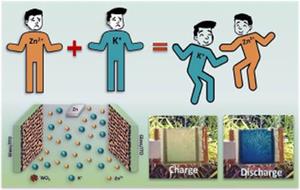
Indian Researchers Develop Smart Windows With Self-Charging, Colour-Responsive Tech
The team made a significant leap in smart window Technology by developing innovative windows that not only change colour but also possess self-rechargeable capabilities. This makes technology a promising addition to modern buildings.
These smart windows enhance aesthetics by seamlessly switching colours while simultaneously storing energy, a feature that could revolutionise energy efficiency in architecture.
For decades, the quest to fabricate functional windows has focused on boosting performance and adding new functionalities. However, when it comes to windows with energy storage and rechargeable capabilities, challenges like cyclic stability and the need for external power have restricted their widespread adoption.
The team led by Dr. Ashutosh Kumar Singh explored the integration of the zinc-ion battery concept in smart windows, utilising tungsten oxide (WO3) as the primary active material in a paper published in the journal Energy Storage Materials.
A major finding of the study is the successful use of spray coating of tungsten oxide with ethanol as a solvent, which resulted in superior uniformity and film quality. It is due to the Marangoni flow effect -- a phenomenon of a liquid moving from areas of low surface tension to high surface tension, in the way soap makes water flow away from dirty spots.
In addition, the incorporation of hybrid Zn-K electrolytes significantly enhanced both the electrochromic and electrochemical performance of the devices. This led to a high transmittance modulation of 50 per cent and impressive cyclic stability lasting up to 10,000 seconds.
The team successfully developed and tested a prototype device using the optimized WO3 sample and Zn-K electrolytes. The prototype demonstrated remarkable cyclic stability over 3,000 cycles, rapid self-charging within 10 minutes, and reversible optical modulation of 40 per cent, highlighting its potential for sustainable energy storage in future smart electronic applications.
The research represents a significant advancement in smart window technology, emphasising the potential of WO3-based materials to create energy-efficient and sustainable electronic solutions.
The findings pave the way for integrating these devices into smart electronics, potentially powered by renewable energy sources, marking a major step forward in the pursuit of sustainable energy solutions and demonstrating the practical utility of transparent batteries in modern technology, said the researchers.

Legal Disclaimer:
MENAFN provides the information “as is” without warranty of any kind. We do not accept any responsibility or liability for the accuracy, content, images, videos, licenses, completeness, legality, or reliability of the information contained in this article. If you have any complaints or copyright issues related to this article, kindly contact the provider above.
Market Research

- Manuka Honey Market Report 2024, Industry Growth, Size, Share, Top Compan...
- Modular Kitchen Market 2024, Industry Growth, Share, Size, Key Players An...
- Acrylamide Production Cost Analysis Report: A Comprehensive Assessment Of...
- Fish Sauce Market 2024, Industry Trends, Growth, Demand And Analysis Repo...
- Australia Foreign Exchange Market Size, Growth, Industry Demand And Forec...
- Cold Pressed Oil Market Trends 2024, Leading Companies Share, Size And Fo...
- Pasta Sauce Market 2024, Industry Growth, Share, Size, Key Players Analys...


















Comments
No comment